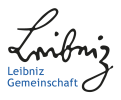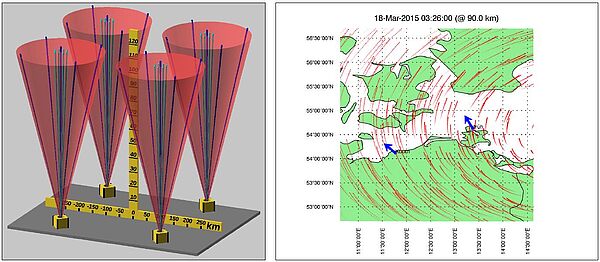FORMOSA: FOur dimensional Research applying Modeling and Observations for the Sea and the Atmosphere
FORMOSA is a project within the framework of the Leibniz Competion and runs from 2020 to 2023. Apart from IAP and IOW, further national and international partners are involved.
Scientific Rationale:
Dynamical processes in the atmosphere and ocean are crucially important for the redistribution of energy, momentum, and tracers on global, regional, and local scales. Unfortunately, some fundamental dynamical processes are only poorly understood. An important part of dynamics involves the transition from larger to smaller scales which engages, amongst others, gravity waves and turbulence. Due to the similarity of the physical processes involved, FORMOSA deals with an atmospheric (IAP) and an oceanographic part (IOW, Leibniz Institute for Baltic Sea Research, Warnemünde).
The transition from larger to smaller scales in the atmosphere is poorly understood mainly because the complexity of the flow covering a large range of temporal and spatial scales (10^6-10^-2m; years to seconds) does not allow for simple modeling. In several cases, there is even no common agreement on the fundamental physical concept involved. For example, there is no consensus on the interpretation of the universal behavior of observed GW spectra in the atmosphere. In large-scale models the effects of GW are typically parameterized due to limitations in computing capacity, ignoring their spatial complexity and temporal intermittency. Furthermore, such parameterizations ignore the role of gravity waves in horizontal energy cascades. Instead, these cascades are usually balanced by adhoc measures that ignore fundamental physics laws.
Standard measurement techniques cover only a certain part of the flow field and are limited regarding their spatial and/or temporal resolution. E. g., most lidars and radars measure only in the vertical. Satellite techniques measure on global scales but are constrained regarding vertical and temporal resolution. Stationarity is frequently assumed when deriving observational parameters. Observations and simulations confirm that these assumptions are far too idealistic.
The main idea of the atmospheric science part of this proposal is to make use of recent progress in lidar and radar technologies developed at IAP to explore for the first time the dynamical, thermal and compositorial (aerosols, metals) state of the atmosphere covering a large vertical (10-120 km) and horizontal (up to several 100 km) range with high temporal and spatial resolution quasi permanently. We call these observations `four-dimensional', 4d. Existing nfrastructure, i. e., lidars and radars in Kühlungsborn and at ALOMAR shall be incorporated in the overall concept. This allows for the first time to disentangle spatial and temporal variations at a large range of scales. The observations will be accompanied by various sophisticated simulations to better understand the physical processes involved and to investigate their applicability to global scale models. Also in the ocean, turbulence is thought to be generated by a downward cascade of energy in which the interaction of internal waves with each other, with vortices, and with topography plays a critical role. Turbulence in the ocean is primarily relevant due to its ability to mix waters with different ensities - with important implications for the ocean's dynamics and overturning circulation. Vertical (e.g., microstructure) profiling techniques provided invaluable information for understanding the factors controlling ocean turbulence, however, only at a resolution that is too coarse to resolve structures with horizontal scales of O(1-100m). This includes the scales of individual shear instabilities (e.g., Kelvin-Helmholtz billows) and the important sub-mesoscale regime. Both constitute crucial links in the energy cascade that are poorly understood. We propose a step toward bridging this resolution gap by combining turbulence microstructure observations with multi-beam echo sounding systems that will allow us, for the first time, to obtain a detailed three-dimensional view of sub-mesoscale and small-scale turbulent processes.













